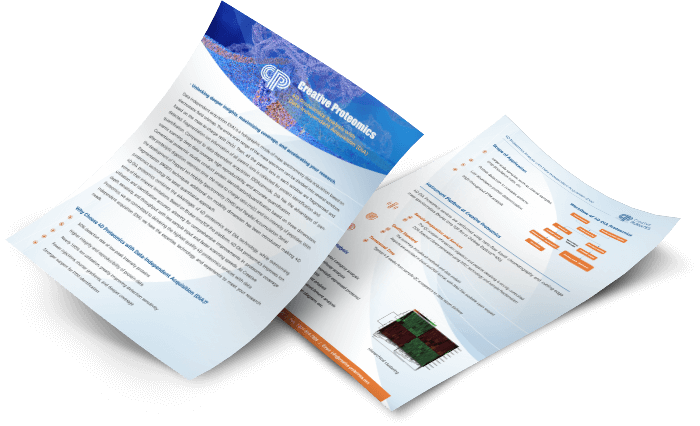Peptide-Centric DIA Data Analysis
Data Independent Acquisition (DIA) is a powerful mass spectrometry-based technique employed in proteomics to comprehensively profile complex biological samples. DIA has evolved over the years, and one strategy that has gained prominence is peptide-centric DIA data analysis.
- DIA is a data acquisition method in mass spectrometry that enables the simultaneous quantification and identification of a large number of peptides within a sample. Unlike Data-Dependent Acquisition (DDA), which selects precursor ions based on abundance for fragmentation, DIA collects fragmentation data for all precursor ions within a predefined m/z range. This results in a more comprehensive dataset that is essential for in-depth proteomic analyses.
- The peptide-centric strategy in DIA analysis focuses on the quantification and identification of peptides as the central units of analysis. This approach is in contrast to protein-centric analysis, where the emphasis is placed on whole proteins. By targeting peptides, the peptide-centric strategy provides several distinct advantages.
Advantages of DIA Analysis by Peptide-Centric Strategy
- Enhanced Depth and Sensitivity. One of the primary advantages of the peptide-centric strategy is the enhanced depth and sensitivity it offers. By targeting individual peptides, it is possible to detect and quantify low-abundance peptides that might be missed in a protein-centric approach. This results in a more comprehensive understanding of the proteome.
- Reduced Sample Complexity. Analyzing peptides instead of entire proteins reduces sample complexity. This simplifies the data analysis process, making it more manageable, especially for complex samples. It also minimizes issues related to shared peptides among different proteins.
- Accurate Quantification. The peptide-centric strategy allows for more accurate quantification. Since the same peptide can be derived from multiple proteins, quantifying at the peptide level provides a clearer picture of changes in protein expression, post-translational modifications, and protein turnover.
- Targeted Analyses. We can use the peptide-centric approach to target specific peptides of interest, which is crucial for biomarker discovery and validation studies.
Key Steps of DIA Analysis by Peptide-Centric Strategy
- Data Acquisition. The DIA experiment begins with data acquisition, where mass spectrometry is used to collect fragment ion spectra across the entire m/z range. This step generates a data-rich file containing precursor and fragment ion information.
- Spectral Libraries. Spectral libraries containing fragmentation patterns of known peptides are created. These libraries serve as references for peptide identification and quantification during data analysis.
- Data Analysis. The acquired DIA data is processed using specialized software to extract and quantify peptide signals. The data analysis involves comparing observed spectra to the spectral libraries for peptide identification and quantification. Precise retention time alignment and spectral deconvolution are crucial for accurate results.
- Statistical Analysis. Statistical tools are employed to assess the significance of changes in peptide abundance between samples, such as in differential expression studies.
- Biological Interpretation. The final step involves the biological interpretation of the results. Our researchers can identify differentially expressed peptides, pinpoint potential biomarkers, and gain insights into the underlying biological processes.

Applications of DIA Data Analysis by Peptide-Centric Strategy
The peptide-centric DIA strategy finds applications in various biological and clinical contexts:
- Biomarker Discovery. By targeting specific peptides, researchers can discover and validate biomarkers for diseases or conditions of interest. This is invaluable in diagnostics and personalized medicine.
- Post-Translational Modification (PTM) Analysis. DIA analysis at the peptide level is critical for characterizing PTMs on specific peptides, such as phosphorylation, glycosylation, and acetylation.
- Comparative Proteomics. For comparing protein expression between different conditions or samples, the peptide-centric strategy provides a granular view, aiding in the identification of subtle changes.
- Quantitative Proteomics. In quantitative proteomics studies, such as label-free or isotope labeling experiments, the peptide-centric approach allows for accurate and high-throughput quantification of peptides.
- Drug Development. Peptide-centric DIA analysis is instrumental in drug development for monitoring protein targets and assessing drug effects on specific peptides.
The peptide-centric DIA data analysis strategy has revolutionized the field of proteomics by offering enhanced sensitivity, reduced sample complexity, and precise quantification. Researchers can leverage this approach to tackle diverse biological questions, from biomarker discovery to post-translational modification analysis. Its versatility makes it a vital tool in advancing our understanding of the intricacies of the proteome.
Creative Proteomics provides comprehensive DIA data analysis services relying on advanced quantitative techniques and instruments. DIA data analysis based on the Peptide-Centric strategy, as an advanced technological approach, can greatly improve the depth and accuracy of proteome quantification. If you are interested in us, please feel free to contact us.
* For Research Use Only. Not for use in the treatment or diagnosis of disease.



 4D Proteomics with Data-Independent Acquisition (DIA)
4D Proteomics with Data-Independent Acquisition (DIA)